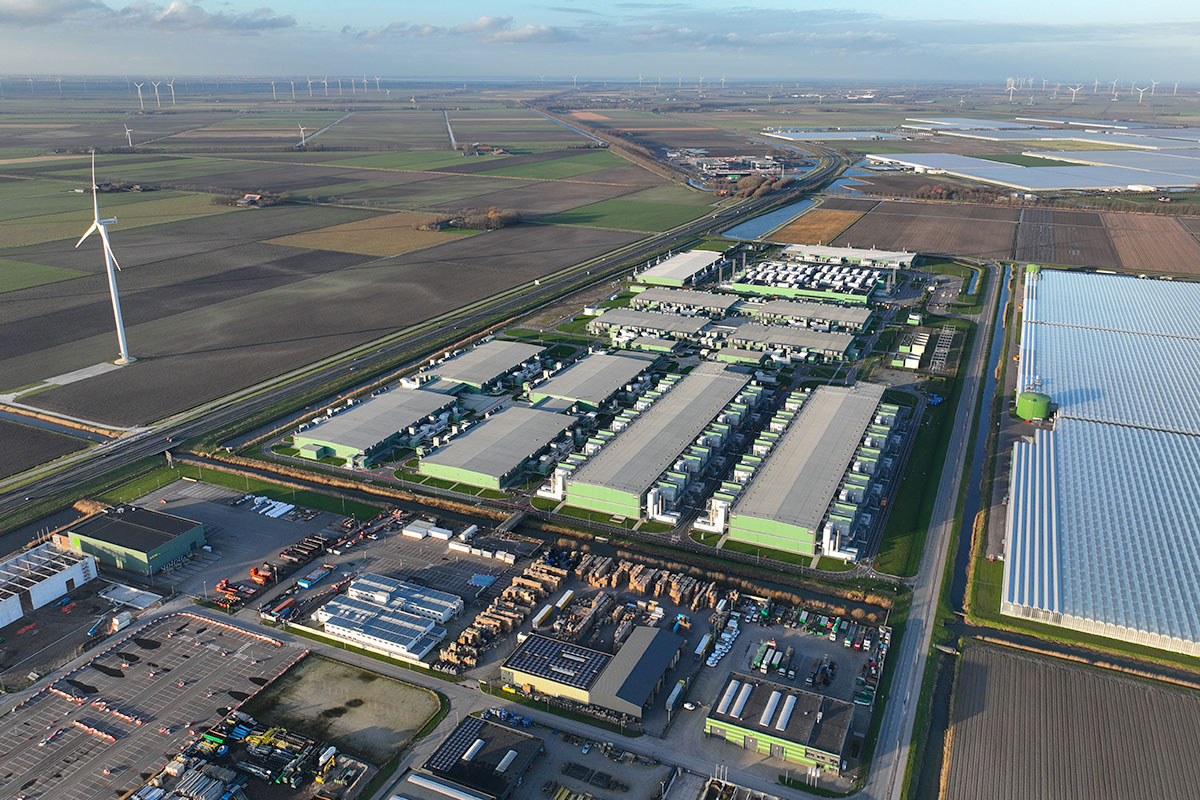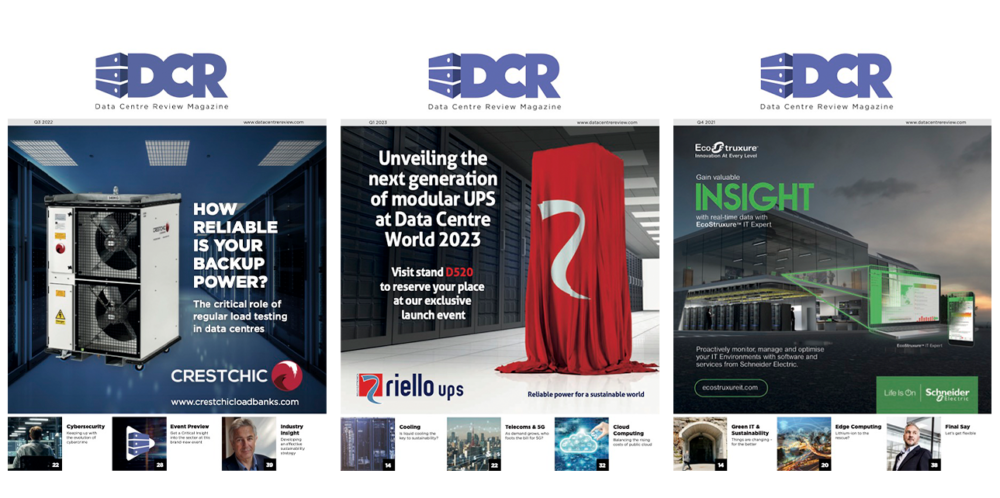Mike Meyer, CEO of Portman Partners, cautions that without bold new energy strategies, the soaring electricity demands of AI data centres could short-circuit the sector’s explosive growth.
The AI revolution is advancing rapidly. Expected to reach $306.9 billion by 2025, create 133 million new jobs and contribute $15.7 trillion to the global economy by 2030, AI seems unstoppable – except it isn’t.
AI data centres, crucial for training advanced models and processing vast quantities of data, are placing enormous power demands on global energy infrastructure. Poor access to power is already hindering the construction of new data centres in some regions of the world. Of course, while other factors contribute, a reliable energy supply is essential; without it, the future of AI – and, consequently, innovation and economic growth – could be jeopardised unless an alternative solution is found.
Power hungry AI
The average power a data centre consumes has grown from 30 MW to 200 MW over the last 10 years and is expected to continue to rise as AI adoption increases. AI has energy-intensive computational requirements, and AI workloads can increase power consumption to over 80 kW per rack, compared to just 8 to 17 kW for traditional data centre servers.
The density of modern AI servers further compounds the issue. Large-scale models like GPT-4 demand thousands of GPUs or TPUs, which operate continuously for weeks as AI models are ‘trained’. The data centres, stacked and tightly packed with energy-hungry processors and servers giving off heat, need additional energy to keep them cool and running efficiently.
It is estimated that AI data centres are currently responsible for approximately 2% of global electricity demand – equivalent to around 460 TW. It seems likely to increase as hyperscalers, such as Google and Amazon, are starting to build facilities with energy requirements exceeding 1GW.
Data centre capacity squeeze
Currently, the global demand for data centre capacity is 60 GW. By 2030, demand may reach 200 to 300 GW, 70% of which will be driven by AI. Today, the Americas dominate the global market with over 100 GW, followed by APAC with 45 GW. In EMEA, almost half (47.5%) of the region’s 34 GW is supplied by the FLAP-D (Frankfurt, London, Amsterdam, Paris and Dublin) markets.
However, to meet future demand, double the capacity created since 2000 will need to be built over the next five years and probably in more remote locations. For example, London, a historic European data centre market, is already spreading North, South, East and West, beyond its traditional boundaries to find available land and power supplies suitable for hyperscale capacity. Other cities will follow suit.
Even if current building plans were completed on time, it is estimated there will be a capacity shortfall of 15 GW in the US alone by 2030.
Much of what is being constructed currently is purpose-built, pre-sold or pre-let. Very little is immediately available, especially in the colocation space where developers are struggling to build new data centres. Consequently, vacancy rates are falling, and prices are rising across the globe. In Europe, for instance, a company would struggle to find 5 MW. Mexico only has 0.6 MW available for lease, and Singapore just 7.2 MW, or 1% of capacity available and prices are high at $315 to $480 per month for 250 to 500 kW— double that of Chicago, with the lowest rates of $155 to $1655 per month. Prices are driven up by fierce competition among hyperscalers pre-leasing space whilst building new.
Access to power is one of the biggest hindrances to building new capacity. Governments concerned about strained electricity grids and national climate targets are stopping or restraining any new development. In Silicon Valley, developers have bought land to develop but then discover it will be a decade before they can access the power grid. In South Korea, Seoul’s DC market should expand by two-thirds in the next two years, but Government restrictions have meant developers have to move away from the city to connect to power. In Dublin, new grid connections won’t be available until 2028 because Ireland’s national transmission company is worried that by 2031 data centres will be using 28% of the country’s power, and the existing grid needs expanding.
Bridging the energy gap
For the last 15 years, globally, demand has remained flat but is now expected to surge with the rapid adoption of AI technology, electric vehicles, and the reshoring of manufacturing. The competition for access to the energy infrastructure is only going to intensify.
For now, some in the data centre industry have simply relocated to cooler climates such as parts of the US, Iceland, and Scandinavia with abundant and affordable renewable energy, but this is not a solution for the long term.
Others are looking at permanent ways to reduce energy consumption. Data centres consume energy mainly in two ways – first, the computing power (40%) and second, the cooling requirements (40%). To reduce consumption, data centre operators are switching to new technologies such as direct-to-chip water cooling systems which deliver 20% energy savings or, as Google recently announced, using AI to optimise cooling systems, which can reduce power usage by 40%.
Concerned about its environmental footprint, the data centre industry is not only trying to reduce power consumption it is also looking for ways to reduce its carbon footprint and is actively seeking or switching to alternative renewable and carbon free energy sources.
In emerging economies, self-generation using solar and wind farms are seen as a sustainable solution, providing data centres and local communities with access to cheap energy. Bogotá’s data centre market is powered by green energy. In Africa, DPA SA and Africa Data Centres are jointly building a 12 MW solar farm and Teraco has raised US$680 million to construct a 120 MW solar site to power its facilities.
Longer term, nuclear power is potentially a reliable, carbon-free energy source for AI data centres. Microsoft has signed a 20-year deal to buy power from the Three Mile Island plant which is reopening in 2028. Small modular reactors (SMRs), designed to be safer and more flexible than traditional nuclear plants, might be another option. Whilst China and Russia have connected SMRs to the grid, elsewhere over 80 SMRs in 18 countries are under construction; in Europe they will be deployed in the 2030s.
Google has announced that it is working with Karios energy in the US and its first small 500 MW reactor will be operational by 2030, with more to come by 2035, and Amazon is making similar investments in nuclear power. The construction costs are expected to be $10 billion or more.
Investing in the future
Building a large data centre currently costs anything between $1 billion to $4 billion. Over the next five years, capital costs are likely to reach up to $25 billion for a 1 GW facility. The cost of powering up AI data centres adds to that price tag. So far, hyperscalers seem willing and able to pay but smaller firms – colocators for instance – will need support from the investment community.
The question is, are investors’ pockets deep enough to build that power infrastructure and are they willing to do so? To date the $16 billion acquisition of AirTrunk by Blackstone and Canada Pension Plan Investment Board is the biggest industry deal to have completed, which is small compared to the $25 to $35 billion needed to overcome the power shortage for new builds.
In 2024 though, some 92% of institutional real estate investors surveyed were planning to invest $100 million and 44% over $500 million in total, compared to 85% and 32%, respectively, in the previous year. More importantly, those willing to invest over $2 billion had doubled to 17%. However, whilst the size of deals is rising, the number of deals has been declining since 2021. That may mean more competition among data centre providers for funds to build and power new capacity.
Even if funding is secured, data centre operators face another issue; skilled construction and specialised labourers such as electrical and cooling engineers to build the data centre are in short supply.
A large facility requires an average of 6,000 to 7,000 construction workers with specialist knowledge and experience. The UK Construction Training Board, however, is concerned that the construction workforce is ageing and Britain needs an additional 50,000+ skilled construction workers per year for the next five years to meet demand.
There is also a global shortage of around seven million green energy workers, which will delay the installation of the solar, wind, hydrogen or nuclear power supplies that hyperscalers or colocators are buying or building. Powering up the data centre industry isn’t just about accessing the grid; it’s about accessing the funds and the people with the necessary skills to build capacity.


